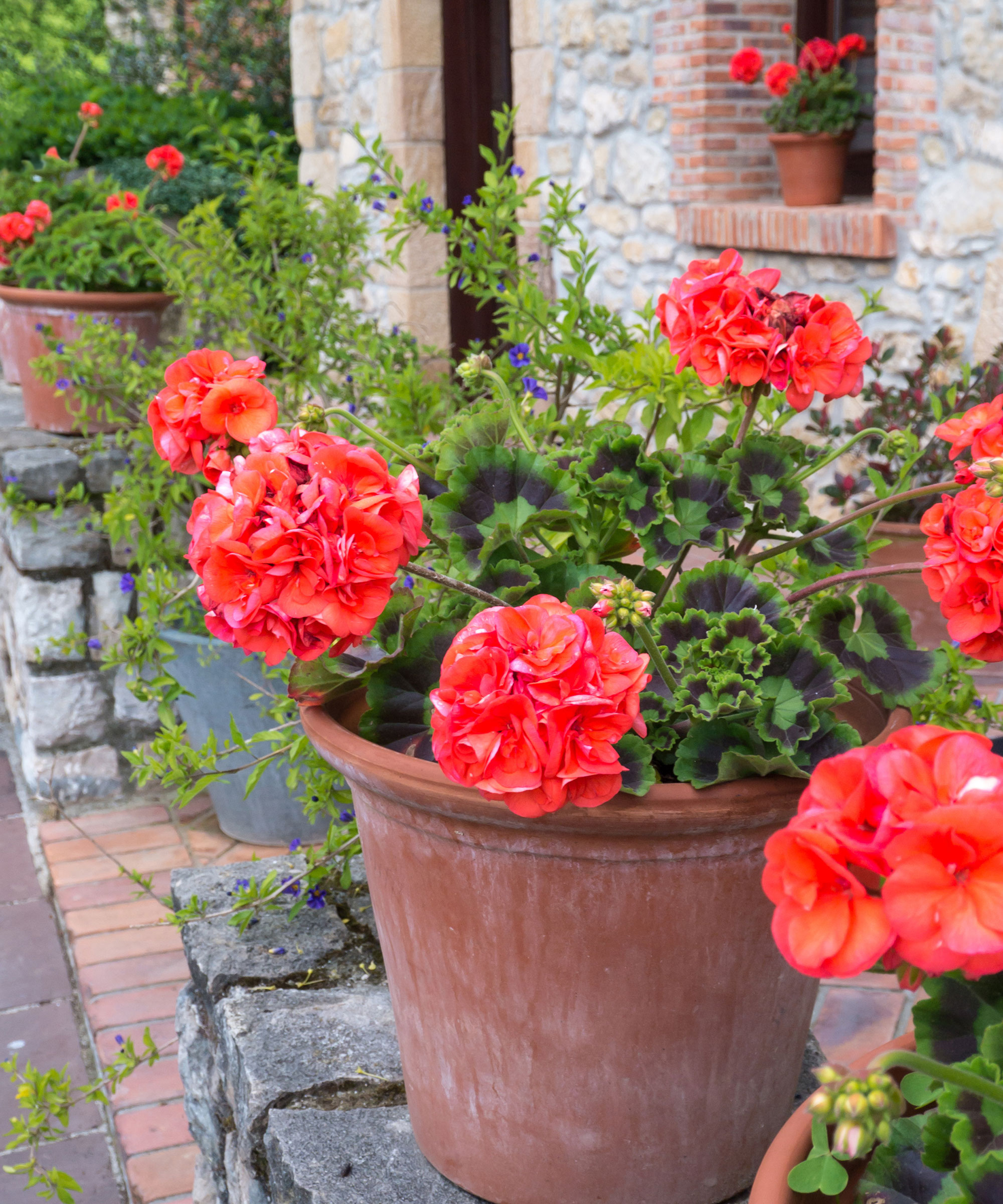How To Propagate Geraniums From Cuttings: 3 Of The Best Ways To Grow More Plants
Don’t say goodbye to them just because they’re annuals; instead, learn how to propagate geraniums to enjoy them year after year.

I had some absolutely gorgeous coral-colored geraniums in a container last year. I loved the color so much I wished I could clone them for this year. A little digging on the internet informed me that I could do the next best thing: take geranium cuttings. Young plants can then be cultivated as container-based geraniums until established, and grown either indoors or moved outside for summer months.
I’d never thought about propagating geraniums. In my zone (6b), geraniums are grown as annuals, so the idea of geranium propagation never crossed my mind. So here’s what I learned about how to grow geraniums from cuttings.
Best Ways to Propagate Geranium Cuttings
With the exception of USDA zones 10-11, geraniums are generally grown as annuals. My search convinced me otherwise.
I have to admit that the idea of propagating geranium cuttings came to me through my Mom, the Master Gardener, who brings her plants indoors and cultivates them in her sunroom for the winter. Lacking the space to do such a thing, I came upon taking cuttings. Cuttings can be started in water, in sterile potting medium or planted directly into the ground.
Best Time to Propagate Geraniums
Take cuttings for geranium propagation from a healthy plant in the late spring to early summer, or in the late fall to overwinter indoors.
How to Take Geranium Cuttings
With some sharp, sterile shears or a knife, take a 3-4 inch (8-10 cm) stem cutting from the terminal end of the shoots. Remove leaves from the bottom 2 inches (5 cm) of the cutting then dip the cut end in rooting hormone.
How to Propagate Geranium Cuttings
Geranium cuttings can be overwintered indoors in containers, planted directly into the soil outside, or started in water for later transplant. Read on to find out how each propagation method works:
Sign up for the Gardening Know How newsletter today and receive a free copy of our e-book "How to Grow Delicious Tomatoes".
Starting Indoors To Overwinter
To propagate geranium cuttings inside to overwinter, put the cuttings in sterile potting mix, vermiculite or a mix of perlite and sphagnum moss. Use a flat or pot with adequate drainage holes. The cutting should be pushed into the medium far enough that it supports itself. Be sure that any bare leaf nodes, where you’ve removed the leaves, are buried in the medium.
Water the medium and allow it to drain. Once the container has drained, cover it and the cuttings with a clear plastic bag that will act as a mini greenhouse.
Put the cuttings in bright but not direct sunlight. The geranium cuttings should root in about 6-8 weeks, often earlier.
When the cuttings have a good root system, transplant them into their own containers. Put the cuttings in a sunny window or other area with good artificial light until the spring at which point they can be hardened off and moved outside.
Planting Direct In Soil
Geranium cuttings can also be started directly into the soil outside, but you need to start them in a partial sun area when temperatures are warm, not hot and keep the soil consistently moist, not sodden.
Before you try this, allow the cuttings to sit out for 3 days so the cut end forms a callus. The callus keeps fungal diseases from taking hold. Then plant your cutting in the ground, far enough that it needs no additional support, as above.
Starting In Water
You can propagate your cuttings in water, but be aware that the results are a tossup. Cuttings in water tend to mildew quickly and eventually will have to be potted up anyway. If you want to start cuttings in water, plan on planting them sooner than later.
As above, take a 3-4 inch (8-10 cm) cutting and place it in a jar of water in bright, but indirect sun. Change the water every couple of days and keep an eye out for root growth. The cutting will root in 6-8 weeks, often as early as 4 weeks. When the cutting has formed a good root system, transplant it into a good potting mix.

The only child of a horticulturist and an English teacher, Liz Baessler was destined to become a gardening editor. She has been with Gardening Know how since 2015, and a Senior Editor since 2020. She holds a BA in English from Brandeis University and an MA in English from the University of Geneva, Switzerland. After years of gardening in containers and community garden plots, she finally has a backyard of her own, which she is systematically filling with vegetables and flowers.

